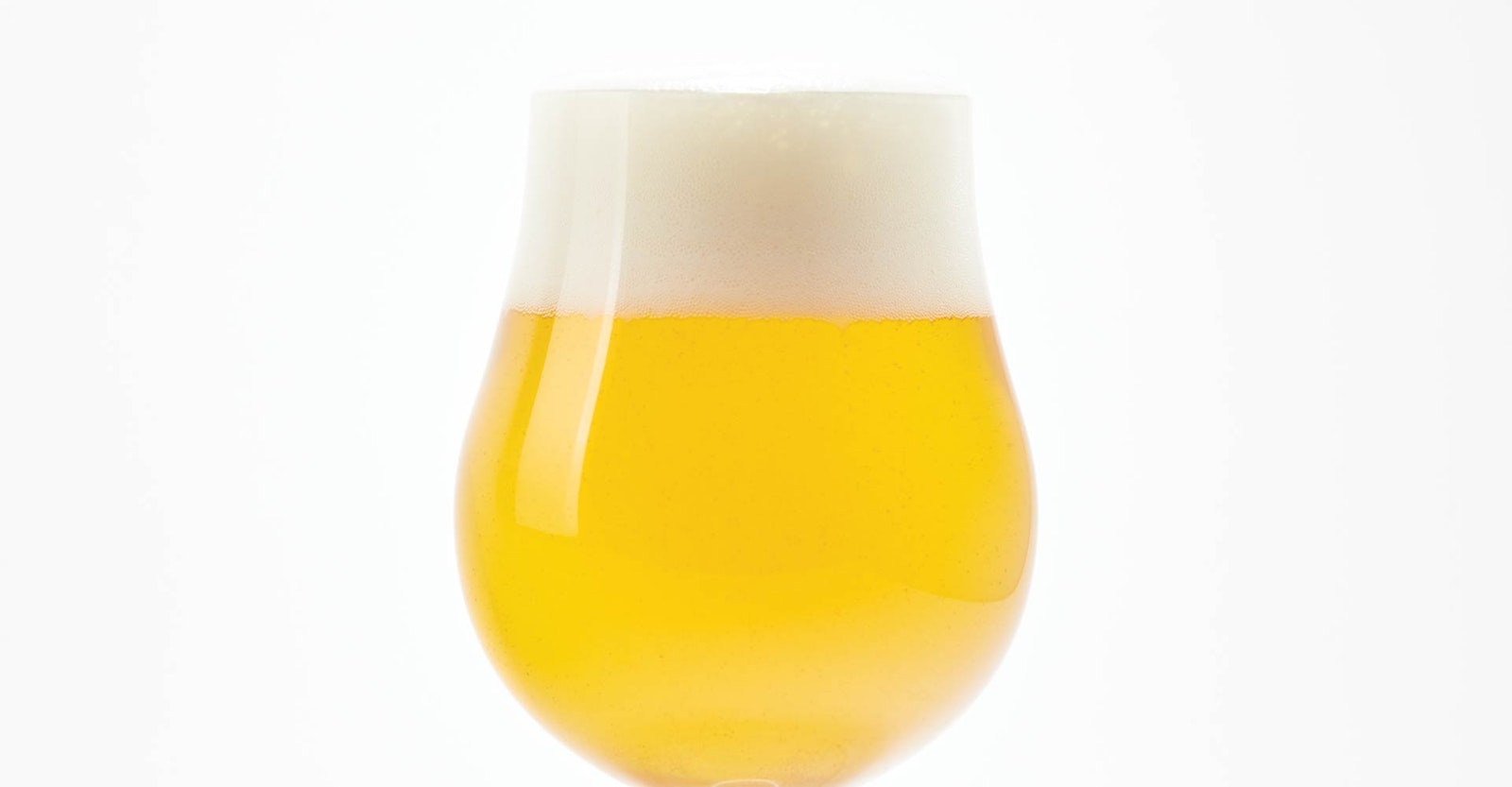All Access Subscribers can download the Beersmith and BeerXML version of this recipe. Subscribe today.
Award-winning homebrewer Paul Zocco (Zok) shared this saison recipe modeled on Saison Dupont, the definitive example of this beer style. This saison shows complex fruity esters with floral and grassy notes. The appearance is cloudy with golden hues. A lower mash temperature (145°F/63°C) would assure a very dry finish, typical of this style of very food-friendly beer.
This recipe is scaled to 5 gallons (19 liters) with a brewhouse efficiency around 80 percent. Zok recommends using soft, low-mineral water throughout the brewing process.
ALL-GRAIN
OG: 1.065
FG: 1.012
IBUs: 28
ABV: 6.5%
MALT/GRAIN BILL
11 lb (4.9 kg) Pilsner malt
0.5 lb (227 g) Vienna malt
0.25 lb (113 g) Munich malt
0.5 lb (227 g) Caramunich malt
0.5 lb (227 g) wheat malt
HOPS SCHEDULE
1 oz (28 g) East Kent Goldings pellets [6.3% AAU] at 60 minutes
0.5 oz (14 g) Styrian Goldings pellets [1.5% AAU] at 5 minutes
YEAST
Wyeast 3724 Belgian Saison or White Labs WLP565
DIRECTIONS
Mash the crushed grains at 150°F (66°C) for 60 minutes. I use the rate of 1 pound (454 g) of crushed grain per quart (946 ml) of water that is heated to 15°F (8°C) higher than my targeted mash temperature because there will be about a 15°F (8°C) drop in temperature when the grains are added. Mix well and adjust the mash to the chosen temperature with hot or cold water. Mash in an insulated vessel for 60 minutes. Vorlauf until the wort runs clear. Sparge with 168°F (76°C) water until you get 6 gallons (22.7 l), which will be boiled down to 5 gallons (19 l). Boil the wort for 60 minutes following the hops schedule. After chilling the wort to below 80°F (27°C), pitch the yeast.
Ferment at the recommended temperature for your yeast strain (refer to the yeast lab specs, roughly 65–70°F/18–21°C). Transfer the beer to a secondary fermentor after 10 days of primary fermentation. Continue fermenting at 65–70°F (18–21°C) until all signs of fermentation are gone, usually another 2 weeks. On bottling day, condition with ¾ cup of corn sugar (dextrose) or 1¼ cup of dry malt extract (DME). Rest bottles at 65–70°F (18–21°C) for 10 days until you achieve carbonation. Then enjoy.
PARTIAL MASH
Partial-mash brewers can calculate the amount of dry or liquid malt extract (DME or LME) to use in place of the base grain. Though DME is a bit more malt rich, use the same calculation. To get the amount of DME or LME to use, multiply the base grain amount by 0.75. Your OG will be basically equivalent. For a partial-mash brew, mash the Vienna, Munich, Caramunich, and wheat using the method in “Directions” and simply sparge the runnings into the kettle along with the DME or LME.

